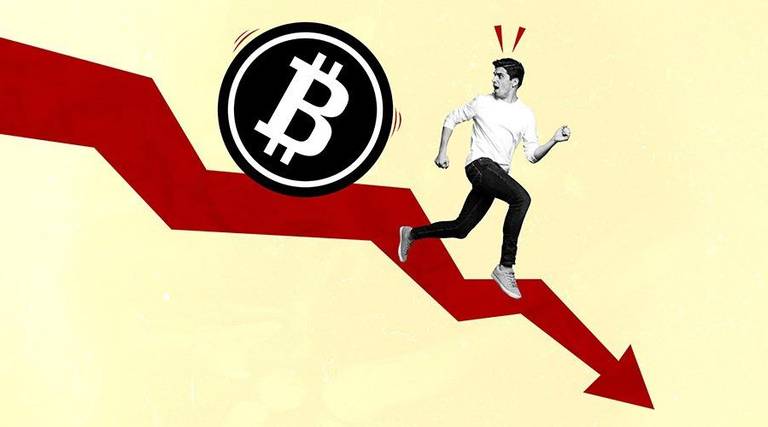
As President Trump prepares to unveil significant reciprocal tariffs, the market braces for volatility, while Bitcoin’s potential resilience remains in focus. Recent fluctuations in Bitcoin’s price, which has dipped around
CoinOtag
You can visit the page to read the article.
Source: CoinOtag
Disclaimer: The opinion expressed here is not investment advice – it is provided for informational purposes only. It does not necessarily reflect the opinion of BitMaden. Every investment and all trading involves risk, so you should always perform your own research prior to making decisions. We do not recommend investing money you cannot afford to lose.
Ethereum On-Chain Data Analysis: A Critical Fork for Holders

Starting April 1, 2025, Ethereum (ETH) is in a risky spot, with a big chunk of its holders apparently underwater. The latest on-chain data show that only 25% of Ethereum holders are currently in profit at current prices, with an incredible 74% sitting on unrealized losses. This paints a potentially dire situation, suggesting the market is at a tipping point where it could go either way, with holders either giving up or re-upping. Ethereum On-Chain Snapshot – April 1, 2025. Only 25% of ETH holders are in profit at current prices. 74% are holding at a loss, a potential setup for capitulation… or accumulation? Time Held: 23% > 1 year 74% held 1–12 months 3% Most holders… pic.twitter.com/rS1qhu2DpG — IT Tech (@IT_Tech_PL) April 1, 2025 A Struggling Majority: The Challenge of Holding Ethereum The second-largest cryptocurrency by market capitalization—Ethereum—has faced a good deal of volatility over the past few months. As a result, a large number of its holders are currently under water. As of this writing, according to the latest on-chain data, only one-quarter of Ethereum holders are currently in profit. A staggering 74% of holders are experiencing losses. This stark contrast between profit and loss could set the stage for an important turning point in the market. When a large percentage of the holders are in the red, two possible scenarios could emerge: either we could witness a widespread capitulation, with holders selling off their positions and driving the price down even further, or we could see a significant accumulation phase, with the majority of investors choosing to hold through the downturn and waiting for a price recovery. For those experiencing a loss, the choice to maintain or divest is a momentous one. Many intermediate-term Ethereum holders are sitting on investments that have markedly devalued since their entry points. With the market still not reflecting a clear directional sentiment, there’s a palpable tension as holders contemplate the decision to either ride or die with the Ethereum price. Alas, for some, that ride could mean further stomach-churning losses before any potential comeback. Holder Behavior: Insights from Time-Held Data The information also illuminates the ordinary actions of Ethereum holders. Based on an on-chain snapshot, most Ethereum holders (74%) have been in possession of their assets for just 1 to 12 months. This group of holders forms the colossal market that is Ethereum, and any price movements that may occur in the future could very well be influenced by their actions. Most of these holders have been counting on Ethereum to come back to profitable conditions, and the current situation is a tough one for them. If the price of Ethereum keeps lurching along like it has been, there’s an increase in risk that some of those holders could throw in the towel and sell. Those would be tons of not-so-easy sells, since Ethereum doesn’t seem to have any buyers right now. And if all those holders who are already on the verge of capitulating actually do go ahead and capitulate, that would put even more downward pressure on Ether’s price. Nonetheless, there’s another scenario possible: Ethereum’s price might find resilient support in the holders who have bought in more recently (those holding from just before the current downturn started). These mid-term holders largely believe in Ethereum’s potential; they aren’t looking to make quick flips but are instead in it for what they see as an inevitable longer-term uptrend. And when Ethereum finally does decide to stage a comeback, it might find a very solid base of support built by these mid-term holders, with no immediate risk of being knocked back down. The data also portray that 23% of holders of Ethereum have held their assets for more than a year. These long-term holders have probably seen and withstood the previous fluctuations in Ethereum’s price and are perhaps in a better position than most to resist the siren song of selling. They have likely been around long enough to experience the up and down cycles of the market, which could give them more conviction to stay in the course of the next bull run. At the same time, just 3% of Ethereum holders have held their positions for not even one month. This group consists mainly of speculators (more likely than not) and, in any case, short-term traders. They should be seen as the very likely first line of defense—the very first possible obstacle—that price movements encounter on their way up and on their way down. Will Ethereum Holders Capitulate or Accumulate? The future of Ethereum’s price depends mainly on the actions of these holders of mid- and long-term. Will they capitulate when the price is under pressure and sell into what looks like a tumbling market, thereby triggering further price declines? Or will they decide to see the current market conditions as a grossly discounted opportunity to buy and hold Ethereum, making it more likely that the cryptocurrency will hold up during this current period of volatility? Right now, the market is at a crossroads, and the decision-making of Ethereum holders will weigh heavily on where it goes next. There’s certainly a risk of capitulation, but the very large number of long-term holders makes me think that Ethereum has a really strong foundation of supporters who could push-bounce Ethereum back to the upside if we were to find ourselves in a recovery scenario. Moreover, the development of the Ethereum ecosystem, together with macro repricing at the I- formed level for equities, could serve as tectonic plate catalysts for recovery. Conclusion: A Market in Flux On-chain data from Ethereum indicates a market at a critical juncture. Most holders are well in the red, and recent price action has given no reason to believe that recovery is right around the corner. All of this creates an environment where two paths lie ahead. In the weeks to come, the market will decide whether to: 1. Capitulatory sell-off? Trade volume has picked up in recent weeks, and along with it, the number of unique accounts that are either buying or selling has surged. A trend this pronounced can often precede a significant price movement. Disclosure: This is not trading or investment advice. Always do your research before buying any cryptocurrency or investing in any services. Follow us on Twitter @nulltxnews to stay updated with the latest Crypto, NFT, AI, Cybersecurity, Distributed Computing, and Metaverse news ! CoinOtag

Bitcoin Drops Over 6% to $83,100 Following Trump`s 25% Tariff on Foreign Autos and 34% on Chinese Imports
Bitcoin and other cryptocurrencies have experienced a notable decline following President Donald Trump`s announcement of new tariffs on foreign imports. The tariffs include a 25% levy on all foreign automobiles, with specific rates of 34% on Chinese imports, 46% on Vietnamese goods, and 20% on products from the European Union. The price of Bitcoin fell over 6% from $88,500, reflecting a broader downturn in risk assets. This move has contributed to increased volatility in the crypto market, as investors react to the implications of the tariffs on international trade and economic stability. This is an AI-generated article powered by DeepNewz, curated by The Defiant. For more information, including article sources, visit DeepNewz . To continue reading this as well as other DeFi and Web3 news, visit us at thedefiant.io CoinOtag











